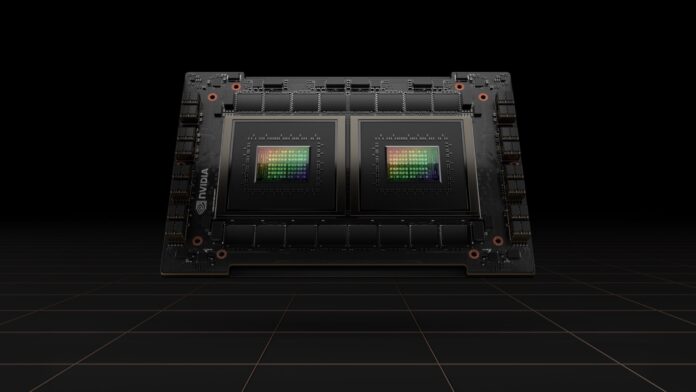Nvidia demonstrates data center prowess at this year’s European supercomputer event
Germany’s ISC Group’s flagship supercomputing event, ISC High Performance 2022, returned to physical form this year at Hamburg, Germany’s Congress Center for the first time in two years. The event, which runs through tomorrow, drew more than 120 exhibitors. It was there at a special address that Nvidia Corp. sketched out in bold strokes its vision of accelerated computing using high-performance computing (HPC) solutions driven by its hardware and software.
Nvidia showcased Los Alamos National Laboratory’s (LANL) new Venado supercomputer, which will deliver 10 exaflops of computer power for artificial intelligence (AI)-related research and development aimed at materials science and renewable energy. The company claims its Arm v9-based Grace Hopper “Superchips” powering Venado will run three times as fast as the company’s last-generation graphics processing units (GPUs), said the company. What’s more, the Grace central processing units (CPUs) can provide twice the performance per watt of traditional CPUs.
Making the best of a bad situation
Nvidia famously failed to acquire Arm earlier this year. Regulators in three countries turned down the $40 billion deal, citing its potential anticompetitive effect within the semiconductor industry. SoftBank has elected to spin off Arm later this year instead, with an initial public offering (IPO). It will retain a majority stake in Arm, but the news has attracted numerous investors within and outside the semiconductor business, including Qualcomm and rivals.
While Arm’s ultimate future may still be in question, Nvidia’s faith that Arm unlocks new opportunities for it in for accelerated computing is unshakeable. Nvidia founder and CEO Jensen Huang made it clear when the Arm deal fell through that his company’s Arm collaboration would continue regardless. Nvidia rolled out the Grace Hopper designs at its own GTC event a month later.
At last week’s Computex 2022 event in Taipei, Nvidia showed off the first production data center solutions built around Grace Hopper, named after the Navy admiral and computer scientist whose breakthrough work led to machine-independent programming languages, like COBOL. At the same event, Nvidia introduced liquid-cooled A100 GPUs, designed to lower data center energy usage by up to 30% using more efficient cooling.
Building fusion power with Omniverse
While Facebook maker Meta beats the infrastructure collaboration drum to bring its vision of the metaverse to life, Nvidia is in a very different place. Nvidia’s metaverse equivalent, which it calls Omniverse, is very much a real thing. Omniverse is a collaborative 3D environment used in production for artists, engineers, and research scientists. Ericsson used Omniverse to build digital twin city simulations, to aid its 5G small cell densification research before physical deployments. The system helped Ericsson mitigate signal interference and propagation issues, which weren’t possible before.
At ISC this week, Nvidia explained that Omniverse is the platform for researchers in the UK to develop a real-time simulation of an operating fusion power plant. Fusion power may not exist in the real world yet, but the researchers hope to considerably shave the research and development time needed to create a working solution, once the pesky real-world physics and engineering are actually worked out.
Accelerating computing research around quantum computing and a new version of Nvidia’s imaging software Holoscan aimed at HPC edge settings rounded out Nvdia’s ISC 2022 announcements.

